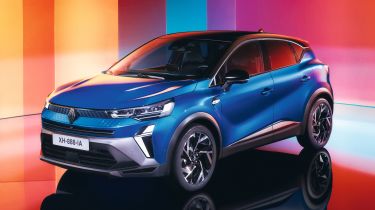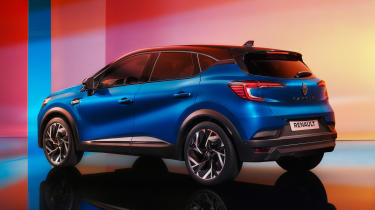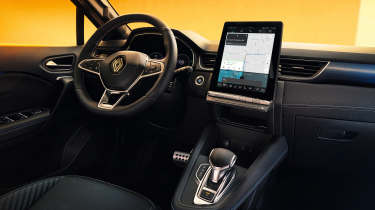New Renault Captur receives dramatic facelift and Google-powered tech
Renault’s small SUV has taken notes from the all-electric Scenic E-Tech when it comes to design and technology
The facelifted Renault Captur is here with a dramatic new look and Google-powered technology onboard. The refreshed version of Renault’s small SUV follows hot on the heels of the heavily updated Ford Puma and lightly revamped Nissan Juke.
The big styling change is the Captur’s new, much less rounded front end which features a complex grille design, which we mocked up in a set of exclusive images earlier in the year. The styling takes its cues from the all-electric Renault Scenic E-Tech; the brand’s redesigned logo features on the Captur, along with new vertical lighting strakes on either side of the front bumper, which has been tweaked too.
The rear has received a more subtle rethink, including a simpler rear bumper and diffuser, and the tail-light housings are now transparent. Two-tone paint schemes will be offered on the facelifted Captur, and come standard with range-topping Esprit Alpine trim, which is also a new addition to the small SUV range.
Moving inside, all but the base Captur is now equipped with a 10.4-inch central touchscreen running the same OpenR Link infotainment system, also from the Renault Scenic. Google Maps and Google Assistant come built in, with over 50 apps available through the Google Play store. Wireless Apple CarPlay and Android Auto are also standard fit with the new setup.
Other tech upgrades include a 10.25-inch digital driver’s display, a wireless charging pad and two USB-C charging ports for those up front, plus another two USB-C ports in the rear on select models.
No leather is used in the revised Captur. In its place are recycled fabrics selected in part for their low carbon footprint, and Esprit Alpine models specifically feature upholstery made from over 26 per cent recycled and recyclable fabrics. Other touches in range-topping cars include aluminium sports pedals, blue contrast stitching and some French tricolour flags dotted about the cabin.
Cabin space is unchanged, and the Captur has retained its sliding rear bench so drivers can prioritise either rear passenger legroom or luggage capacity. With the rear seats all the way forward, the Captur boasts 536 litres of boot space, or 422 litres when slid fully back.
The facelifted Captur is available with up to 18 driver aids, from adaptive cruise control to a driver drowsiness warning, and also features a new ‘My Safety’ button that allows the driver to activate personalised settings for the ADAS suite, giving the option of quickly switching certain safety systems off.
Renault has also tweaked the suspension geometry and power steering of the Captur in an effort to improve body control. Engine options are the same; the entry-level Captur TCe 90 uses a turbocharged 1.0-litre three-cylinder petrol engine producing 90bhp and 160Nm of torque; enough for 0-62mph in 14 seconds. It’s paired with a six-speed manual gearbox.
The Captur E-Tech features a full-hybrid powertrain comprising a 1.6-litre four-cylinder petrol engine and two electric motors – one can drive the front wheels, the other is a starter-generator to fire up the engine. The setup produces 145bhp in total, allowing for 0-62mph in 10 seconds. It’ll return up to 60.4mpg, according to Renault.
The e-motors are powered by a small 1.2kWh battery, which allows the Captur E-Tech to cover short distances on electric power. A new E-Save function has been added to the hybrid Captur though, which maintains battery charge at least 40 per cent, for use later in your journey, or to maximise performance when needed.
The facelifted Renault Captur will go on sale in the second half of 2024, with buyers to be given a choice of Evolution, Techno or new Esprit Alpine trims.
Click here for our list of the best hybrid SUVs...
Find a car with the experts











